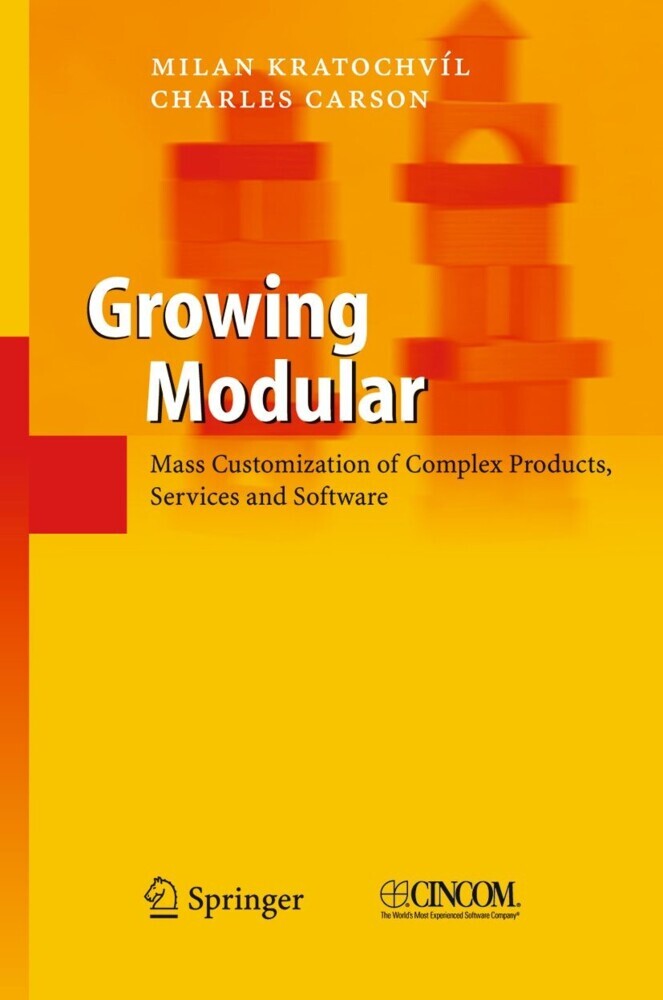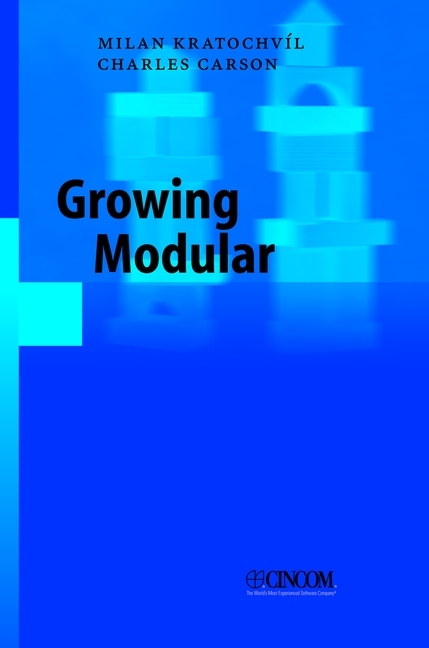Growing Modular
Mass Customization of Complex Products, Services and Software
This book is about a practical approach to the Mass Customization of complex products, services and software, namely "Configure-to-Order", the definition of modular product packages and their configuration on demand, to fit customer-specific needs. "Configure-to-Order" concepts apply equally well to configuring complex products, services, and software, and are relevant in industries ranging across manufacturing, public services, and financial services.
The target audience is those interested in management or process improvement in areas such as customer service, sales, marketing, exports, new product development, or production. Software to support "Configure-to-Order" is discussed and a generic configurator evaluation checklist is provided. The objective is to provide the reader with a manageable approach to modularization and mass customization, the benefits of this approach, and the shift necessary to get there.
The target audience is those interested in management or process improvement in areas such as customer service, sales, marketing, exports, new product development, or production. Software to support "Configure-to-Order" is discussed and a generic configurator evaluation checklist is provided. The objective is to provide the reader with a manageable approach to modularization and mass customization, the benefits of this approach, and the shift necessary to get there.
1;Foreword;6 2;Acknowledgements;8 3;Preface;10 4;How to Customize this Book;12 5;Contents;13 6;A Graphical Index of Chapters;17 7;Introduction, with Focus on the Customer;18 8;1 Mass Customization, Components and Customer Intimacy;26 8.1;1.1 The Lego Generation Grows Modular, with Grown-up Products and Configurators;26 8.2;1.2 The Causes: Why Custom-tailored, and why Industrial Mass Customization;27 8.3;1.3 From Mass Production of the Past to a Modern, Component- based Economy;28 8.4;1.4 The Road to Customer Intimacy;30 8.5;1.5 The Benefits of Focus on Both the Customer and the Process;33 8.6;1.6 Knowledge Sharing Related to Components;35 9;2 Selling Customized While Producing Industrialized;38 9.1;2.1 Modularization Related to Product Upgrades and Life- cycle;38 9.2;2.2 From "Assemble to Order" or "Engineer to Order" - to Configure- to- Order;40 9.3;2.3 Configure-to-Order Trends;43 9.4;2.4 Marketing to Demanding yet Cost-conscious Customers and Segments;44 9.5;2.5 The Ubiquitous Nature of Configure-to-Order;48 9.6;2.6 Timing the Transition;53 9.7;2.7 Pine's Matrix Helps to Reduce Uncertainty on Market Turbulence;53 9.8;2.8 Implementation: A Leap or Several Small Steps;56 10;3 Mass Customization of Services;57 10.1;3.1 Service Customization;57 10.2;3.2 The Relationship Between Services and Software;57 10.3;3.3 Examples of Using Service Automation to Treat Different Customers Differently;59 10.4;3.4 Customizing Public Administration;61 11;4 Mass Customization of Software Products;66 11.1;4.1 The Multiple Roles of the Software Industry;67 11.2;4.2 Software Components Viewed as Service-Providers;67 11.3;4.3 Customizing Software Support and Training;69 11.4;4.4 Buy and Build Rather than Buy or Build;72 11.5;4.5 Five Basic Concepts of Software Customization;73 11.6;4.6 Collaborative and Adaptive Customization - Intermixed in Complex Products;79 11.7;4.7 Parameterization in Software Products;80 11.8;4.8 Other Adaptive-Software Techniques;86 12;5 Streamlining the Product and the Processes;88 12.1;5.1 A Targeted Process Thinking;88 12.2;5.2 Component-based Products, Bids, After Sales - and Design- to- Configure;90 12.3;5.3 Long-lived Product Generations, Few Components, Many Possible Combinations;91 12.4;5.4 Co-modularization to Double and Re-double the Dividend;92 12.5;5.5 Product Families vs. Components;97 12.6;5.6 Modularity Types;99 12.7;5.7 Corporate Driving Forces of Modularity;103 12.8;5.8 IT and Knowledge Technology in Achieving the Conflicting Objectives;104 12.9;5.9 The Benefits of Dynamic Product Structures;105 12.10;5.10 Managing Change in Customer Requirements;107 12.11;5.11 A Brief yet Amazing Calculation Exercise;107 12.12;5.12 Propagating Parameterization Throughout the Process;109 13;6 The Importance of Data, and the Ability to Capitalize on It;111 13.1;6.1 IT in Sales and Marketing;111 13.2;6.2 CRM in Brief: Ask for More;112 13.3;6.3 Automating to Sell;114 13.4;6.4 Architecting the Configurability as a Product Tree or a Component Pool;117 13.5;6.5 Configurators;120 13.6;6.6 Evaluation of Configurators - the Extended Checklist;124 14;7 Trends in the Order Process for Complex Products and Services;133 14.1;7.1 Extreme Engineer-to-Order Industries ( a Few Facts from a British Survey);133 14.2;7.2 Mainstream Configure-to-Order Industries ( a Few Facts From a Car- dealer Study);136 14.3;7.3 Globalization - The Opportunity to Grow;137 14.4;7.4 An Ego-neutral Aid in Workplace Conflicts;138 14.5;7.5 Customer Relationship Management and Learning More from Customer Data;139 14.6;7.6 Trends in Information Technology;141 14.7;7.7 The Web as a Technology Driver;144 15;8 Concluding Remarks;148 16;9 Afterword: the Virtual Future ...;150 17;Supplement 1 - Industry Cases;158 17.1;S1.1 CtO in High Value Electronics - Configuration for a Global Network of Dealers: American Power Conversion ( APC);158 17.2;S1.2 Heavyweight CtO - Pioneering Modularization and Mass Customization for Export and Growth: Scania;162 17.3;S1.3 High Volume CtO
Kratochvil, M.
| ISBN | 9783540274308 |
|---|---|
| Artikelnummer | 9783540274308 |
| Medientyp | E-Book - PDF |
| Auflage | 2. Aufl. |
| Copyrightjahr | 2005 |
| Verlag | Springer-Verlag |
| Umfang | 172 Seiten |
| Sprache | Englisch |
| Kopierschutz | Digitales Wasserzeichen |











